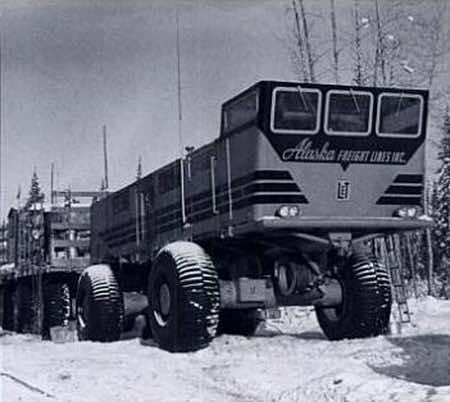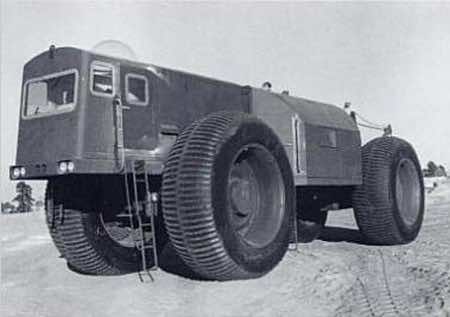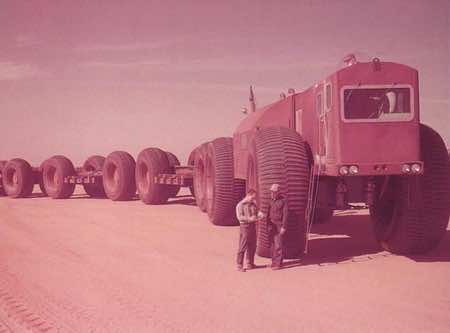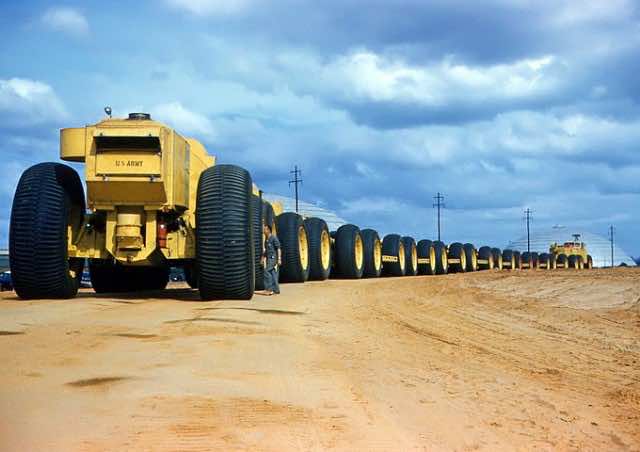During the early stages of the Cold War, the US military developed huge road trains to transport heavy machinery and strategic weapons across the region. Since most of the military movement was still dependent on the rail networks, the strategists pointed out the vulnerability in the plan by proposing a scenario where the rails were damaged or rendered useless by a Russian attack. Thus, the need for the road trains was firmly established.
These massive wheeled land-based trains are one of the longest road vehicles ever built, with the largest of them reaching almost six hundred feet. Nearly all of these road trains were manufactured by the Texan company, LeTourneau. Although, modern road-based trains are still being used for various operations, these are not as huge as the vintage ones. Plus, the older road trains were designed for off-road expeditions as well.
When tasked with creating a machine of such massive size, LeTourneau designed a diesel-electric transmission to drive the endless number of wheels in each road train. Each wheel had its own separate electric motor to produce the traction needed.
In many ways, these land-trains were quite similar to the diesel-electric locomotives being used on the rails around the same time. The only major difference was the huge rubber tires that stretched about six hundred feet. Various models of the road trains were manufactured by the heavy machinery company for different military purposes. Some of them are:
1.LeTourneau SnowTrain 1
2. LCC-1
The idea of the road trains was quite popular with the Army and in 1954, they commissioned the LeTourneau company to make a larger and even more powerful version of the vehicle. The resulting vehicle was named TC-497 Overland Mark II in 1961.
Mark II included a number features allowing it to be resized, unlike the fixed number of buggies in the previous models of the road trains. The overland train was driven by one engine of 600hp. To reduce the weight and improve the speed, the frame was primarily made of Aluminium.
To reduce the weight and improve the speed, the frame was primarily made of Aluminium. The turning mechanism of the train was quite fascinating as such an enormous length cannot be operated by a single steering wheel. Thus, several wheels were installed in multiple bogies and by directing all of them to turn in unison, the land train was able to turn around corners. The locomotives became very popular among the Army brass in the 1960s due to their ability to carry heavy military loads across the country. The idea eventually died out as the heavy lift helicopters became operational.
3. TC-497 Overland Train MK II
The US military was so impressed with the performance of these land trains that they decided to go for an even more ambitious TC-497 Overland Train Mk II. The key feature of the new train was that it could be used to string together as many bogeys as needed because its 1,170 horsepower engines were adequately distributed throughout the length.
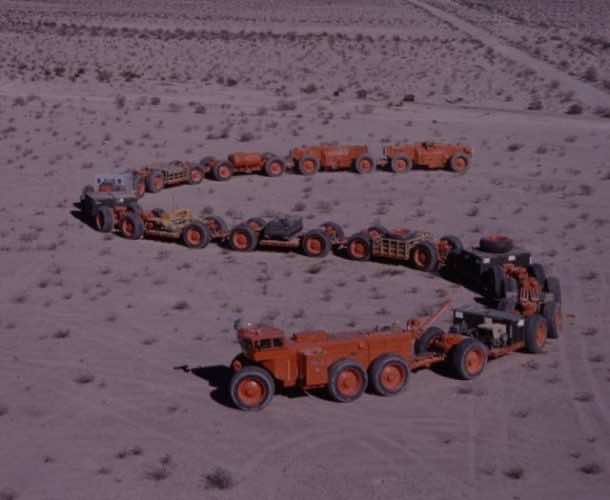
More engines could easily be added or removed according to the requirements. Welded Aluminium made the trains lighter than the previous ones thus, enhancing their speed. Also, the problem of steering these trains was resolved by making all of the bogeys independently steerable.
To take a turn, military drivers would turn in unison on these bogeys and achieve the difficult task of turning round corners. Mark II had been designed to travel long distances, so it came equipped with sleeping quarters for six, toilets and even a gallery. Each cabin was 30 feet tall and radiated a feeling of extreme monstrosity. The overland train was handed over to the Army in 1962. Slowly, most of these trains phased out.
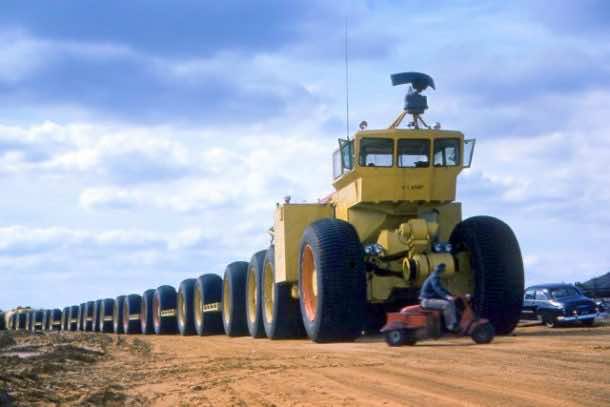
Although the Mark II was eventually sold for scraps, it still holds the record for the longest onland transport vehicle. Judging by the sheer size and length of the monster train, I am sure this record will stand for a long time!


